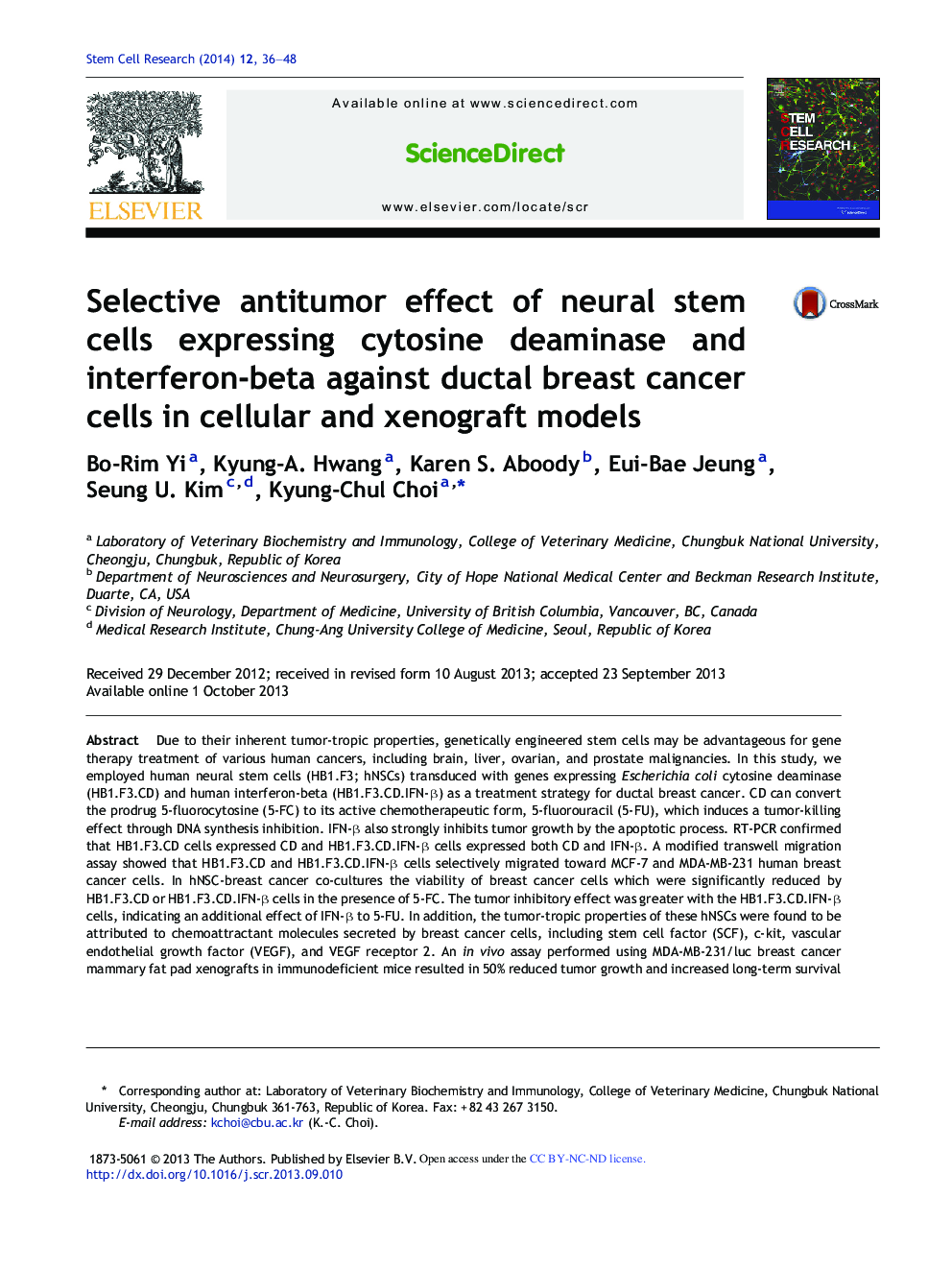| کد مقاله | کد نشریه | سال انتشار | مقاله انگلیسی | نسخه تمام متن |
|---|---|---|---|---|
| 2094580 | 1082028 | 2014 | 13 صفحه PDF | دانلود رایگان |
• Engineered neural stem cells (NSCs) with therapeutic genes selectively migrated breast tumors.
• Chemoattractant factors may play a role in this tumor tropism.
• They have potential therapeutic effect on breast cancer growth in in vitro and in vivo models.
• NSCs genetically modified to express CD and/or IFN-β genes can be used as a novel targeted cancer gene therapy.
Due to their inherent tumor-tropic properties, genetically engineered stem cells may be advantageous for gene therapy treatment of various human cancers, including brain, liver, ovarian, and prostate malignancies. In this study, we employed human neural stem cells (HB1.F3; hNSCs) transduced with genes expressing Escherichia coli cytosine deaminase (HB1.F3.CD) and human interferon-beta (HB1.F3.CD.IFN-β) as a treatment strategy for ductal breast cancer. CD can convert the prodrug 5-fluorocytosine (5-FC) to its active chemotherapeutic form, 5-fluorouracil (5-FU), which induces a tumor-killing effect through DNA synthesis inhibition. IFN-β also strongly inhibits tumor growth by the apoptotic process. RT-PCR confirmed that HB1.F3.CD cells expressed CD and HB1.F3.CD.IFN-β cells expressed both CD and IFN-β. A modified transwell migration assay showed that HB1.F3.CD and HB1.F3.CD.IFN-β cells selectively migrated toward MCF-7 and MDA-MB-231 human breast cancer cells. In hNSC-breast cancer co-cultures the viability of breast cancer cells which were significantly reduced by HB1.F3.CD or HB1.F3.CD.IFN-β cells in the presence of 5-FC. The tumor inhibitory effect was greater with the HB1.F3.CD.IFN-β cells, indicating an additional effect of IFN-β to 5-FU. In addition, the tumor-tropic properties of these hNSCs were found to be attributed to chemoattractant molecules secreted by breast cancer cells, including stem cell factor (SCF), c-kit, vascular endothelial growth factor (VEGF), and VEGF receptor 2. An in vivo assay performed using MDA-MB-231/luc breast cancer mammary fat pad xenografts in immunodeficient mice resulted in 50% reduced tumor growth and increased long-term survival in HB1.F3.CD and HB1.F3.CD.IFN-β plus 5-FC treated mice relative to controls. Our results suggest that hNSCs genetically modified to express CD and/or IFN-β genes can be used as a novel targeted cancer gene therapy.
Journal: Stem Cell Research - Volume 12, Issue 1, January 2014, Pages 36–48
